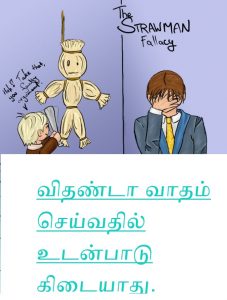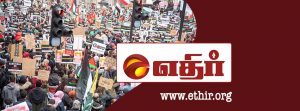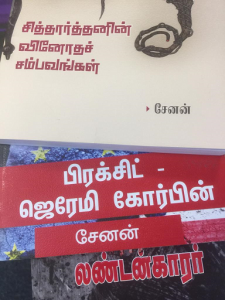Nepal’s eruption of mass protest – what is the way forward?
Nepal has now joined the long list of developing nations revolting against a rotten and corrupt ruling elite. The immediate trigger was the government’s decision to ban 26 social media platforms on Thursday, 4 September. By Monday, 8 September, protesters had begun gathering outside the parliament building. In response, heavily armed police opened fire on the crowd, killing dozens and wounding thousands. Reports now say 72 protesters were murdered in cold blood during that day and in the events that followed.
This brutal attempt to crush the movement only intensified it. The very next day, 9 September, the streets of the capital Kathmandu were flooded with tens of thousands of young demonstrators, called by the media “Gen Z,” though not exclusively from that age group. In a furious backlash, protesters stormed the parliament building, setting it ablaze and torching luxury cars. They smashed through police barricades and advanced into government offices, the lavish residences of ministers, the homes of all three main party leaders—including the prime minister’s residence—and the ruling coalition’s headquarters. Many leaders and parliamentarians went into hiding, while the prime minister himself fled to an army barracks for safety. One of the key right-wing media concerns, Kantipur Media House, was also set on fire.
With resignations piling up and the government collapsing, a power vacuum emerged. As protesters celebrated their victory in the streets, the army moved in, presenting itself as a mediator. On 11 September, military leaders convened talks at army headquarters, bringing together representatives of the protest movement and remnants of the old regime to shape an interim arrangement. A couple of days later, former Chief Justice Sushila Karki was appointed interim Prime Minister. She, in turn, began appointing ministers to form an interim government.
Reason for Mass Anger
The outpouring of anger was the product of decades of looting and blatant corruption by the ruling elite and their capitalist allies, at a time when countless workers and youth were condemned to worsening economic hardship. As always, the bourgeois media and their “think tanks” sought to downplay the crisis, blaming it on the mismanagement of a few leaders and framing the protests as the impatience of Gen Z upset over a social media ban.
The root cause lies with the ruling elite and their collaborators, who bear direct responsibility for the deteriorating conditions that fuelled the mass anger. Geopolitical shifts and the global economic crisis had already dried up some foreign investment, further increasing dependency on remittances. Most of the youth seek their future and jobs outside the country, as no substantial investment is made to create employment. Youth unemployment stands above 20%. The economic slowdown also had an impact on the service sector and the agricultural industry, on which Nepal’s economy heavily depends. Natural disasters linked to the global climate crisis added further devastation.
While the economy crumbled, the elite intensified their looting and political manoeuvring to protect their grip on power. Social media became a battleground where stories of corruption spread like wildfire—most infamously the “visit visa scandal,” in which government officials were accused of selling forged documents and visas to Western countries for bribes. Even as leaked audio recordings circulated, coalition leaders worked to stall or bury any serious investigation.
Public outrage was also fuelled by the spectacle of “Nepo babies”—the children and relatives of top politicians exhibiting their lavish lifestyles and extraordinary wealth online. This also played a role in sparking protest waves in Indonesia. The same phenomenon exists in China among the offspring of senior officials, which continues to provoke fury among young people struggling to survive. Same anger now expressed in the streets of Philippines.
Calls for mass protest over the looting of wealth and natural resources were already spreading across social media when the government imposed its sweeping ban on 26 major social media platforms. Yet the attempt to silence dissent and curtail the spread of youth anger backfired. Determined young people simply shifted to alternative methods of accessing social media platforms and mobilised on an even larger scale.
Political Manoeuvres and the History of Betrayal by All Parties
The now further disgraced right-wing Nepali Congress (NC) has a long history of betrayal and corruption. Its leaders have historically maintained ties with the monarchy and the corrupt elite of the country. When a revolutionary wave swept Nepal in 2006, many of its leaders relied on the protection of the Indian government.
The Communist Party of Nepal (Unified Marxist–Leninist), commonly known as UML, is a former Stalinist party that has often swung between the right and the centre (like their counterparts in the Communist Party of India (CPI) and CPI(M)). UML also has a long record of collaborating with NC in their manoeuvres for power and corruption.
The mass movement and general strike of 2010 temporarily stripped both NC and UML of power. At that time, the movement was led by the Maoists, most prominently the Communist Party of Nepal (Maoist). With the masses on their side, the Maoists had the potential to implement far-reaching socialist policies. However, the inadequacy of their leadership meant they fell into the trap of endless negotiations with discredited bourgeois representatives. Using the false method of the “stageist theory,” the Maoists invited back the ousted NC and UML into power-sharing deals—mediated by the Indian government with the involvement of the CPI and CPI(M) in India.
Various factions of the Maoist movement in India hailed the CPN(M) at that time as the revolutionary leadership of the globe. The Maoists themselves claimed they were implementing a unique “Nepali path to Marxism”—known as the Prachanda Path, named after their leader Pushpa Kamal Dahal (Prachanda). (See a critique by the CWI here: The General Strike and the Permanent Revolution, https://www.socialistworld.net/2010/06/29/nepal-the-great-general-strike-the-permanent-revolution/).
Instead of pushing the revolution forward, the Maoists became locked in a prolonged tug of war over a constituent assembly, constitution drafting, and endless rounds of compromise—processes that were used by NC and UML to re-establish their power base. Maoist guerrillas who had risked their lives to end the monarchy and fight for a socialist Nepal were ordered to integrate into the very army and police they had fought against. Meanwhile, the Maoist leadership prioritised power-sharing with right-wing parties and gradually abandoned one policy after another.
This betrayal led to splits, discontent, and disillusionment. Out of these splits emerged today’s Communist Party of Nepal – Maoist Centre (CPN-MC), led by Prachanda. Thousands of former Maoist fighters either joined the state security forces or returned to their villages, where they were condemned to poverty. Today, the Maoist Centre has become indistinguishable from UML or even NC.
After years of stalling, the ruling classes secured what they wanted: a bourgeois constitution that consolidated their grip on parliament. From the first general election under the new constitution in 2017 to the next in 2022, no single party was able to secure a majority. The Maoist Centre’s support continued to decline.
From this weak position, the Maoists struck a pre-election (2022) alliance with NC, only to break it after the results and instead align with UML, allowing Prachanda to become prime minister. Then, in 2024, Prachanda abandoned UML and returned to NC to remain in office. But by mid-2024, UML and NC struck a deal against him, leading Prachanda to lose a vote of confidence—and K.P. Sharma Oli, leader of UML, became prime minister once again.
This period saw frequent defections, reshuffles, and opportunistic alliances, with no regard for principle. The Maoists also went through repeated internal splits. Throughout these years of instability, all political leaders enriched themselves through corruption and plunder. From small regional outfits to the three major parties, all were united in their betrayal of the people they claimed to represent.
It is no surprise, then, that enraged protesters in 2025 not only attacked government buildings but also targeted all parties, including the Maoist Centre headquarters, publicly burning the red flag in the streets.
Character of the Movement – Directionless, Headless, and the Future
Though several NGOs, such as Hami Nepal (We Are Nepal), have called for mass action, no organization was involved in initiating or organizing the protest. Once the accumulated anger began to pour onto the streets, tens of thousands spontaneously started turning up. The social media ban did not stop the spread of news, as many youths had already begun using different gateways to access various online platforms. Anger against all political parties and their leaders, and the determination of youth to do something about it, was visible from the start. But there is no evidence of attempts to coordinate or expand demands beyond the anti-corruption slogan. The movement also didn’t last long enough to facilitate coordination, as the government collapsed within a couple of days and the military carried out the formality of “involving the movement” by inviting a few known names to negotiate and select the interim prime minister.
The selection of Sushila Karki was apparently discussed and debated on Discord, a gaming platform—dubbed by some as the “Gen Z Parliament.” The so-called “Discord PM” then took the liberty to appoint ministers. Already, several youth groups—including Hami Nepal—are complaining that they were not consulted and even attempted to organize a protest against Sushila Karki. No coherent approach emerged or was put forward at this stage regarding what is next, where the movement should go from here, or what should be the role of the interim government. A section of them are promoting Balendra Shah (known as Balen), a former rapper and mayor of Kathmandu, elected as the only independent candidate in the country, who had no links to other political parties. Other so-called “professionals” or popular figures, like Balen, have no clear idea regarding the way forward. Beyond the rhetoric of “reform,” none have put forward a plan on how they intend to deal with the deteriorating economy and dire conditions across the country. As mayor, one of Balen’s “claims to fame” was the use of brutal police force against small street vendors as part of his “cleaning up the city” policy.
While past revolutionary upsurges emerged from the rural areas as part of the Maoist armed rebellion against monarchical rule, this one was mostly centered in the capital, led by young workers and petty-bourgeois layers. Though several unions expressed support for the protest, they largely remained outside of it. Many are still connected to the ruling political parties. The movement did not take up the past struggles and demands of the unions for job security, wage increases, and better conditions. No attempt was made to link up with organized workers. Though there is a widespread feeling against the rich and the looting of capitalists, no connection was made to what breeds corruption. As in many other cross-class movements, “cleaning up the government” and replacing it with supposedly “good individuals” was presented as the fix.
Given the chaos that exists among the youth in social media discussions, it is unlikely at this stage that a coherent organizational structure will emerge from the movement. Only the buildings were burnt, but the state apparatus remains intact, now protected by the military. More than half a million government employees are said to be part of the established parties. All three established parties also have a base that was not fully shaken. Various regional corrupt parties maintain their support based on ethnicity and regional divisions. As the movement recedes from the streets back into homes, these parties are beginning to re-emerge. They will wait for their turn. So-called “veteran” leaders of NC or UML have done this in the past and will be prepared to do it again. Already there are calls for the reinstatement of the dissolved parliament. They are also talking about compensation for damaged properties, which will cost millions of taxpayers’ money.
Prachanda, the former Maoist armed rebel now disgraced, announced that they will build an even bigger headquarters in place of the burnt one. While the families of those killed by the police are being given just $7,000—apparently the maximum allowed by law—but new laws will be prepared to compensate the capitalists for lost properties. The new interim government said its priority is to establish law and order and then call elections in March next year. All the parties will use this period to manoeuvre back into power. What will be produced at the so-called democratic election in March next year? Another coalition government, a prolonged debate in parliament—perhaps now about how best to curtail corruption? Who will represent the movement, the youth, the workers, and all the oppressed sections of the country at that election?
However, the youth protest has struck fear into the hearts of all the establishment parties. No amount of security measures, including massacres, could hold back the overwhelming outpouring of anger. This may force certain compromises out of fear of further outbursts, but it still does not represent an existential threat to the establishment. Unless a strategy develops to link up all those in struggle on a clear programme and establish organizing cells across the country on that basis, no real challenge to the rotten system can be made. If we are to end corruption and all the ills rooted in the capitalist system, and implement policies that will reverse the profit-based economy and begin to use resources for the benefit of all, a revolutionary socialist programme needs to be adopted by the movement along with the struggle for a government led by the working class that can bring together all youth, poor and all those oppressed, that will implement such a programme.
Is the Popular Uprising Also a Reflection of the End of the so called Left in Nepal?
Only a decade ago, a revolutionary situation existed in Nepal that posed not only the end of the monarchy and exploitation but also the end of the capitalists’ grip on power. Of course, a country locked between two major regional powers, China and India, with limited industrial development, faced enormous challenges to move forward. However, it was not these complications only factors that held back the movement then, but also the ideological weakness of its leadership. In essence, their inability to break from the two-stage theory and break with capitalism entirely led to the beginning of the betrayal of Maoism.
It is important to note that it was not just the failure of the Nepali variant—the Prachanda Path—but of the Maoist idea, in general, about how the revolution would unfold. Maoists of all variants in India, along with their intellectual allies and international sympathisers, hailed the Nepali Maoists at the time, as they shared the same ideological bankruptcy of collaboration with the capitalist class as a supposed first stage to establish a democratic capitalist republic on the road to socialist revolution. In effect, this allowed the capitalists to regroup and re-establish looting and corruption. (See: Nepal: Turning back the wheel of history, https://www.socialistworld.net/2014/04/01/nepal-turning-back-the-wheel-of-history/).
The discrediting of Maoist leaders such as Baburam Bhattarai and Pushpa Kamal Dahal (Prachanda) began then, first among their own party members and cadres. Their collaboration with the capitalists further eroded support among workers and the emerging generation. Those born before or during the revolutionary period in Nepal, who lived under the so-called “democratic government,” witnessed only prolonged political manoeuvring and worsening conditions. The generation that joined the armed struggle to establish a new Nepal saw their spirit and revolutionary vigour recede—replaced by disillusionment and despair.
The betrayal and eventual defeat of the Maoists also contributed to the ideological confusions reflected in the current popular uprising. The movement was neither a decisive offensive against neoliberalism or capitalism, nor an expression of illusions in capitalism’s ability to deliver.
In Nepal, the discrediting of socialism came through the experience of Maoist betrayal, but a general state of confusion is not unique to Nepal mass movement. No mass movement is ever pure, especially at the beginning. From Sudan to Sri Lanka, there have been ideological confusions, cross-class character, lack of leadership, and inability to put forward strategies for the next stage of struggle. At the same time, in all these movements, the experience of what they call “people power” has been unquestionably established as a powerful force for change. It has struck fear into the hearts of many corrupt governments and ruling classes in the region and beyond. Inherent in these movements is also a sheer determination to bring down the regimes they oppose. Violent outbursts—though often blamed on “small violent elements”—are, in some sense, a reflection of that determination. Often the violent eruptions took place as reactions to the counter-revolutionary violence of the regimes.
This strength has so far been able to achieve the immediate aim of ending the rule of corrupt elites. However, it remains a temporary gain, as strategies and perspectives for continuing mass power have not yet emerged. Temporary arrangements that followed these movements, while pretending to listen to the streets, hollowed them out and pushed back further escalation by force. Like the temporary government in Sri Lanka, the interim government under Sushila Karki is also talking about the establishment of law and order and promising justice. Yet she is a defender of the capitalist economy, and her views are no different from those of the disgraced leaders. Her actions, in the name of the movement, will only help to divide and silence it, giving ample time for the ruling elite to re-establish their rule, albeit through new vehicles.
This vacuum is also being exploited by populist forces that pretend to be against corruption but either play a Bonapartist role—balancing between mass anger and the protection of capitalist profits—or pave the way for the return of the old regime. Reactionary forces such as the Rastriya Prajatantra Party, a Hindu nationalist and monarchist party, sense opportunism in this period. They also receive support from their counterparts in India, rallying behind the Modi regime. Section of the super-rich also support their views though not directly involved.
If the movement is to maintain its power and end the vicious cycle of corruption, looting, and exploitation, it must take decisive steps forward in terms of holding power. Violent outbursts create fear among the elite and bring temporary gains by sending them on the run, but they do not achieve lasting results. Instead, they can be counterproductive, particularly without the backing of organized forces in society. Such violence is often used by regimes to step up repression, leading either to the silencing of the movement or to situations like Myanmar, where the opposition is engaged in a deadly prolonged battle.
Hence, the strategy of uniting all youth, activists, and workers who take part in the movement should be put forward. Calls for establishing a common platform of struggle that emerged on the very day of the mass movement in Nepal were mistakenly rejected by some self-proclaimed “leaders.” Instead, democratic coordination bodies of the movement should be established in workplaces, cities, and regions. No regime or representative of capitalism will be able to continue its reign without the support or acquiescence of the working class. Appeals should be made to unite various sections of society—workers, farmers, youth, and all oppressed sections. They must not only break with rotten parties but also with capitalist policies. However, to achieve this brake there needs to be a revolutionary force which has both a clear programme and is able to put forward concrete steps to build a movement able to implement the necessary revolutionary change.
There is no solution based on capitalism. As we see in Sri Lanka and Bangladesh, small economies can temporarily delay attacks on conditions and implement a few populist policies, but the attacks will return as there is no prospect of capitalist growth in this crisis period. The creation of democratic institutions rooted in workers’ participation, enabling genuine power to lie with those who produce and sustain society, is essential. Establishing a workers-led government is the most viable path toward genuine democracy, social justice, and economic equality—ending the vicious cycle of crisis and oppression and setting an example for workers and youth in other countries to follow.




















